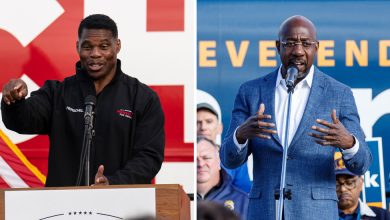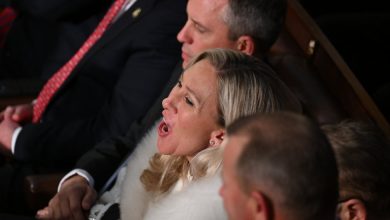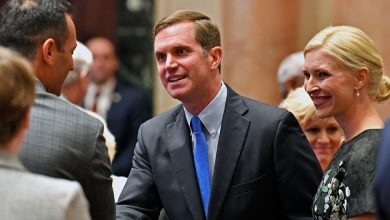As Breyer Pondered Retirement, Biden Bet on a Hands-Off Strategy

WASHINGTON — President Biden had hoped that Justice Stephen G. Breyer would retire soon. But as he and his advisers waited for the most senior member of the Supreme Court’s liberal wing to make up his mind, the president had made it clear: No one was to do anything to pressure him.
Part of the reason, three advisers to Mr. Biden said, was because the president, who was the chairman of the Senate Judiciary Committee in 1994 when Justice Breyer was confirmed, had respect for the man. Part of it was because he had respect for the role. And part of it was that he knew liberal groups were already applying plenty of pressure — any more could backfire.
The installation of a Supreme Court justice often requires deft maneuvering from a president, but Mr. Biden’s first opportunity to nominate a replacement came as many liberals were still in shock at how Republicans had managed to quickly confirm a conservative to the court in 2020 after the death of Justice Ruth Bader Ginsburg, who had refused to retire when President Barack Obama could have appointed her successor.
With Democrats back in the White House and clinging to narrow control of the Senate, Mr. Biden took a gamble with a no-pressure approach to the delicate question of how to ease a justice into giving up a life-tenured position replete with status, celebrity and power.
His reticence meant that the two men spoke for the first time since Mr. Biden took office on Thursday, when Justice Breyer hand-delivered his resignation letter to the White House, according to the advisers, who spoke on condition of anonymity to discuss a sensitive process.
Beyond the gates of the White House compound, a chorus of liberals had warned for months that the risks of standing back and letting Justice Breyer, 83, retire on his own terms were too great. Left-leaning academics took out newspaper ads urging the justice to consider retirement, and a billboard truck circled Washington streets with a blunt message: “Breyer, retire.”
“I think that the idea of remaining silent in a situation like this is characteristic of a hands-off approach that Democrats have taken with the court in general that is very much outdated now,” said Brian Fallon, the executive director of Demand Justice, a liberal advocacy group that was responsible for the billboard vehicles. Of Justice Breyer, he added, “we’re just relieved that he made the decision that he did.”
Justice Breyer is one of three liberals on the court, which has a six-member conservative supermajority. And while replacing him with another liberal is unlikely to alter the basic dynamic of the court, doing so would give Mr. Biden a chance to reinforce the liberal wing.
For his part, Justice Breyer had dropped clues to his thinking. In August, he granted an interview to The New York Times, and recalled that Justice Antonin Scalia had once told him that he did not want to be replaced by someone “who will just reverse everything I’ve done for the last 25 years.” That, Justice Breyer said, “will inevitably be in the psychology” of his decision. “I don’t think I’m going to stay there till I die — hope not.”
A person familiar with the White House strategy said that anyone who would have been in a place to communicate with Justice Breyer believed leaving judges alone to decide when to step down was the best approach — not just for handling Supreme Court justices, but for aging judges at all levels — lest overt pressure from the White House provoke irritation and make them less likely to leave.
Throughout the years, other White Houses have tested their own strategies to different ends. Donald F. McGahn II, former President Donald J. Trump’s first White House counsel and the primary architect of his administration’s success in reshaping the judiciary, courted Justice Anthony Kennedy to retire in 2018 without ever bringing up the topic, according to people briefed on accounts of their conversations.
Instead, Mr. McGahn is said to have sought to make Justice Kennedy comfortable with the process by which any successor would be chosen by regularly seeking his advice about potential nominees for lower-court vacancies — and by recommending to Mr. Trump that he nominate one of the justice’s former clerks, Neil M. Gorsuch, to fill an earlier vacancy.
Mr. Obama, too, is said to have never directly told Justice Ginsburg that it was a good time for her to step down, according to former White House officials. The closest he came was when he invited her to lunch at the White House in 2013 for a conversation that is said to have danced around the subject.
Specifically, Mr. Obama is said to have brought up the looming 2014 midterm elections, and the significant likelihood that Democrats would lose their majority in the Senate. But Justice Ginsburg — the court’s oldest member and a two-time cancer patient — made clear that she intended to continue serving, as she did until her death late in Mr. Trump’s presidency.
For the Biden team, the Breyer matter was so delicate that even after news of the retirement broke on Wednesday, White House officials took pains to make sure Justice Breyer’s announcement happened on his own terms. That is not to say that the administration had not been preparing for a vacancy.
Mr. Biden and his advisers spent the first year of his presidency quietly laying the groundwork for fulfilling a promise he had made during the campaign to nominate a Black woman to the Supreme Court should the opportunity present itself. Eight of his first 16 nominees to federal appeals courts were Black women.
Other presidents and their advisers have been more forceful about creating an opening on the court. In 1965, when President Lyndon B. Johnson wanted to put his friend Abe Fortas on the court, he persuaded Justice Arthur J. Goldberg, a Kennedy-era appointee, to leave the bench to take up an ambassadorship to the United Nations. Two years later, when Mr. Johnson wanted to appoint Thurgood Marshall as the first Black Supreme Court justice, he pushed Supreme Court Justice Tom C. Clark to step aside by appointing his son, Ramsey Clark, as attorney general, creating a potential conflict of interest.
The Breyer retirement lacks any similar drama.
When his departure was officially announced at the White House on Thursday, Justice Breyer offered a rare window into his thinking: As Mr. Biden stood behind him, he invoked the Gettysburg Address and spoke of the diverse and “complicated” country he had served. Respect for the Constitution and rule of law, he said, had made a complicated country an exceptional one.
Justice Breyer said that it would be up to future generations to shape the direction the country took from here. Those generations, he said, would “determine whether the experiment still works and, of course, I’m an optimist and I am pretty sure it will.”
It was really not so different from what Mr. Biden has said throughout his presidency. Earlier this month, he called for Americans “to stand for the rule of law, to preserve the flame of democracy, to keep the promise of America alive.”
And though Justice Breyer’s remarks were not political, many in Congress believed he had maneuvered to step down when Democrats were still in a position to replace him before the midterms.
Justice Breyer’s appearance at the White House on Thursday alongside the president was unusual. When Justice Sandra Day O’Connor retired, President George W. Bush delivered remarks alone in the Rose Garden after a phone call from her. Justice David H. Souter similarly placed a phone call to Mr. Obama, who announced the news in the White House briefing room. Justice Kennedy hand delivered his retirement letter to Mr. Trump but did not appear next to him that day.
Mr. Biden seemed to want to give the retiring justice a moment under the lights.
“Justice Breyer has been everything his country could have asked of him,” Mr. Biden said, before inviting Justice Breyer and his wife to see a copy of the Gettysburg Address hanging in the Lincoln Bedroom.
Michael D. Shear contributed reporting.





